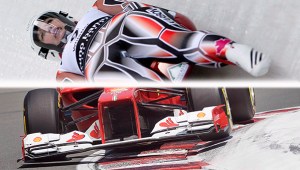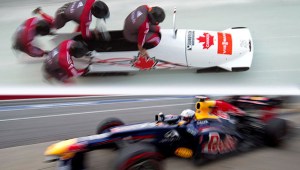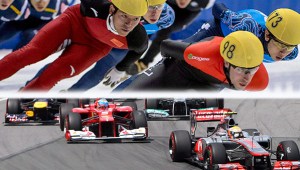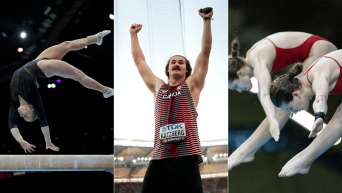Top-5 similarities between F1 drivers and Olympians
Faster, higher, stronger. That’s what it takes to win. And though the amateur and professional sporting worlds are often divided by money, sponsorships and audience, athletes everywhere can undeniably unite behind the motto of the Olympic Games. On June 6 they will.
Before the Grand Prix du Canada in Montreal kicks off, Canadian Olympians and Olympic hopefuls will be mingling with F1 drivers during a ‘Grand Evening’, from which proceeds will be donated to the Canadian Olympic Foundation, to help more athletes reach the podium.
As much as professional F1 drivers and Olympic athletes have different end games, they share a lifestyle in their pursuit of excellence. With this in mind we compiled a top-5 list of things F1 drivers and Olympic athletes have in common:
 1. STOMACHS OF STEEL
1. STOMACHS OF STEEL
F1 – Hanging on for dear life every day may not intrigue most people, but this is indeed the sweet spot for F1 racers in the throes of a jaw-clenching turn. Formula One cars are capable of creating anything up to a sustained 3.5 g of cornering force.
LUGE – If Olympic lugers are anything, it’s intense. Sliders of all shapes and sizes endure a range of g-force that can reach up to 5 g. Throw a luger in the passenger seat of an F1 ride and they will likely be right at home (at least around the corners).
![]()
 2. NEED FOR SPEED
2. NEED FOR SPEED
F1 –The need for speed can be better described as a way of life for an F1 driver. These guys have dipped into 300km/hr territory and can crack 100km/hr in less than two seconds from a dead stop.
BOBSLEIGH – Relying on only human power, there have been many pub debates about who travels the fastest on the Olympic field of play. Despite the 100km/hr at which downhillers can fly and the 60km/hr cyclists can rip around the velodrome, it’s the four-man bobsled that dominates the speed conversation – hitting speeds upward of 150km/hr with nothing but gravity and guts to make it happen.
![]()
 3. HOT HOT HEAT
3. HOT HOT HEAT
F1 –An F1 cockpit is a sweaty place, no questions. Drivers can drop up to three litres of water in sweat over the course of a race – making hydration and proper nutrition a key factor. Sound familiar?
MARATHON – On a warm day a runner can lose more than four liters of sweat during a race. Hydration is huge for the endurance crew – even those in the water. Marathon (open water) swimmers take on liquid nutrition mid-swim. Awkward? Maybe, but always hydrated.
![]()
 4. CLOSER TO THE HEART
4. CLOSER TO THE HEART
F1 – Race car drivers unfortunately often take flack for not fitting into the traditional definition of an ‘athlete’. Well, here’s a fact that should rid that stereotype. Some of the best drivers have a resting heart rate that can dip down to 58 beats per minute and crank up to 170 in the crux of a race.
BIATHLON – Fitness is a true fundamental for any Olympic athlete in any sport. However, only in the sport of biathlon do athletes put so much demand on their heart rate: Ramping it up to cover the trails and calming it down to shoot. In full competition these winter athletes can get up to about 200 beats per minute and wind it down to 140 in the shooting range. It ain’t the high-speed thrill of an F1 fuel-burner, but it’s surely closer to the heart.
![]()
 5. IN IT TO WIN IT
5. IN IT TO WIN IT
F1 – It’s all about being in the right place at the right time. Positioning and strategy is as essential as the car’s engine. If you’re not there when it matters, you’re just not there.
SHORT TRACK SPEED SKATING – Canada’s two-time Olympic gold medallist Charles Hamelin was recently quoted in a CNN article saying “It’s not the strongest guy on the line who will win, it’s the smartest.” Well, Charles, chances are you would do just fine on the F1 track too. We’re sure your teammates in ski-cross, snowboard-cross, cycling and cross-country skiing would agree.
Racing is racing, after all.










